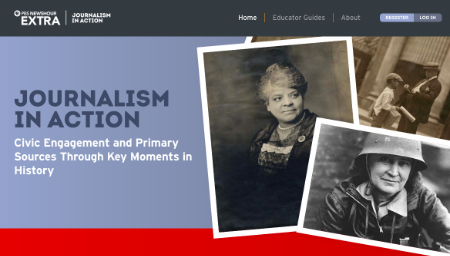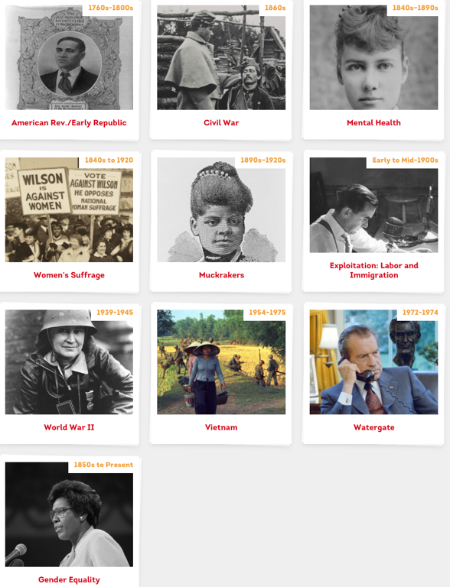TPS Spotlight: Journalism in Action
Explore the ways the free press has covered major events in history dating back to the American Revolution with PBS NewsHour EXTRA’s interactive Journalism in Action: Civic Engagement and Primary Sources Through Key Moments in History, a website supported by a grant from the Library of Congress Teaching with Primary Sources program.
Fun, engaging civic activities for middle and high school students illuminate historical documents and help students make their own judgments using news articles, broadcast segments, political cartoons and photographs curated from the Library of Congress’ databases. And there are educator guides too!
Journalism in Action’s case studies cover a wide variety of topics. Through the news, students learn about people who tried and sometimes succeeded to create civic change like suffragists and civil rights activists and how many of these goals are still being fought for today. Students learn about groundbreaking journalists—Frederick Douglass, Mathew Brady, Nellie Bly, Ida B. Wells, Edward R. Murrow, Ethel Payne and Gwen Ifill—but also about journalists who likely have not made it into most history textbooks even today, like three sisters from Virginia who lived behind Confederate lines and started the Waterford News, sympathetic to the Union, and Thomas Morris Chester, a Black journalist on the frontlines for one of the top Philadelphia newspapers.
So what does Journalism in Action look like for teachers and students? Liz Ramos, a Journalism in Action curriculum writer and American history teacher in California, shares how the website hones in on the C3 framework, encouraging students to inquire, ask questions and then create their own front page news stories on issues they care about. You can check out how Liz uses Journalism in Action in her classroom for assessments and to teach social emotional learning (SEL) and inquiry-based learning.
Greg Timmons, a retired Montana middle school history teacher and Ken Burns curriculum writer, wrote this case study on the Civil War in which he asks students to examine photography by Mathew Brady using the magnifier and annotation tool. Students’ media literacy skills are put to good use as they discuss the ethical and historical implications of Brady staging many of his photographs.
Do you have primary source materials related to media literacy, journalism, or history that could pair well with Journalism in Action? We would love to talk with you about working together, so please contact us!


